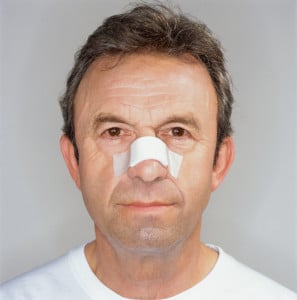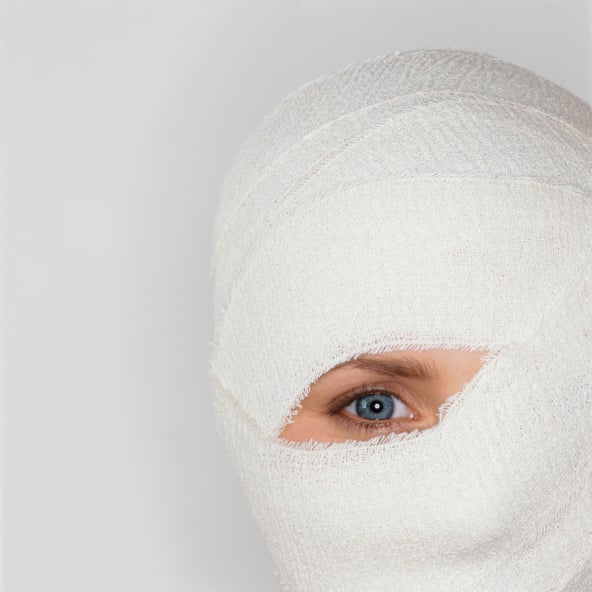You’ve heard of the generation gap and the gender gap, but have you heard of the beauty gap, a combination of the two? Saying that women are overqualified to advise men about “aging gracefully” is an understatement. The path hasn’t always been so smooth — with all that breaking through and leaning in — and there have been more than a few cosmetic disasters along the way. But nowadays, women are looking pretty darn great as they hit 50 and beyond, often better than their male counterparts. Some believe it’s just a matter of time before “just for men” salons will be popping up all over town. A few already exist that offer manscaping: facials, highlights, waxing, manicures and pedicures that cater specifically to male needs. Not surprisingly, Boomers — who expected to stay forever young — have led the way. Eager for skin and hair products that serve anti-aging purposes, many midlife men regularly use hair color, botox, lasers and other cosmetic procedures. The next generation is not far behind. Young men want products of their own, not only to delay signs of aging, but to enhance their current appearance as well. Call it equal opportunity — or perhaps equal opportunism — but there is no doubt that men’s grooming practices are being carefully watched by the cosmetic industry. Already this demographic shows huge potential, and serious economic consequences are imminent, should more men catch the beauty bug. The good news? Guys have begun to see advantages to enhancing their appearance, a focus once considered outside their domain. The not-so-good news? Men may soon head down a perilous path that women have been traveling for decades. Whether men’s interest in cosmetic products and services is viewed positively or negatively, there are clear reasons to believe this trend will likely continue. 1. Men Want In: Our culture’s emphasis on youth and beauty does not discriminate. Age-defying promotions in the media target both men and women. Ads for hair dyes, testosterone supplements and erectile dysfunction meds are as ubiquitous as those for feminine beauty products. While women’s magazines have been attacked for digitally enhancing their female models, male images are often equally unrealistic. When men of a certain age do appear in the media, they are often portrayed with humor (or derision) as they struggle with what it means to age in today’s culture. Meanwhile, the always-ready virile male with six-pack abs and a thick head of hair is presented as the ideal image of masculinity. Consequently, guys of all ages are beginning to take notice to the underlying message, “pay more attention to maintaining your appearance and you, too, shall be happy and successful.” 2. Beauty Economics. Today, the urgency to look young and attractive is especially important when jobs are on the line. In a stubbornly lean employment market, aging men find it’s harder to secure work after turning 50 and once there, some believe their age keeps them from being promoted. While looking good has been proven to give job applicants an advantage, excelling appears to be increasingly tied to a person’s appearance as well. This strikes men and women alike. The short-term investment in plastic surgery is viewed by some men as having long-term economic benefits. 3. The New Male: Sociologically speaking, male identity has undergone dramatic changes over the past several decades. While attractiveness has always been important to both genders, men were supposed to look good in a naturally rugged way. Pampering was not considered masculine and those who worked at being attractive were often dismissed as vain or insecure. Beautiful men were even questioned about their sexual orientation or called metrosexual. Once a pejorative term, metrosexuality has virtually lost its meaning as men all over the world, in cities and rural areas, now show interest in looking good. 4. He/ She/Us: While there is a cultural emphasis on youth and beauty, we’re also seeing a blending of gender roles. More women are working and bringing home the bread for their families. More men are raising the kids, staying at home and even baking the bread. In dual-career families, attitudes toward child rearing and domestic chores have shifted so that men are expected to share these responsibilities. Male celebs now embrace roles once typical only played by females — as chefs, stylists and homemakers — and it’s only a matter of time before the everyday man does so as well. With this shift come the routines and habits that support these new roles. 5. The Better Profile. As more people delay marriage, and about one out of two end in divorce (with second marriage divorce rate being even higher), there are more men in the dating scene than ever before. Being a good provider once seemed enough to attract potential suitors, but not anymore. Women today are more independent, personally and financially, so men feel they have to offer other assets, including passions, interests and good looks. Midlife men report feeling uncomfortable posting unedited self-portraits on dating websites, worried that their true age and appearance will turn potential suitors away — a concern women have faced for years. 6. In and Out Dermatology: While cosmetic surgery was once viewed as ‘fixing’ physical features — burns, acne scars, disfigurements, etc. — non-invasive dermatological procedures are now considered part of many people’s routine skin care regimen. Retin A, exfoliation, Fraxel and other lasers are regularly used by patients for anti-aging purposes. Ultrasound technology that stimulates the production of collagen and results in tighter skin has become increasingly popular among working men. Too busy for the down time that traditional face-lifts require, these ‘in and out’ procedures appeal to men who want to appear refreshed and healthier or have others to believe their good looks come naturally. 7. All for One, One for All: No longer are cosmetic procedures for the rich and famous or aging woman only. As plastic surgery and non-invasive treatments are marketed to the masses, more everyday men and women — some as young as age 18 and as old as 85 — are asking for surgical alterations. There is less shame and secrecy involved, as more people talk openly about the work they get done. Some celebs even boast about theirs, displaying the before and after photos as if surgery is a quick and easy solution to their beauty needs. According to the American Society for Aesthetic Plastic Surgery, the number of men seeking cosmetic procedures has skyrocketed (a 106% increase over the past 15 years), with over one million men undergoing surgery for aesthetic purposes in the U.S. alone. While there will always be fundamental differences between genders, the beauty gap is clearly closing. Men are no longer immune to the desire for good looks and the wish to maintain them as they age, nor are they restricted from solutions to attain these goals. My next post here will be about how to achieve the ‘beauty balance’ — making the most of one’s assets without losing sight of who you are — a challenge many women have achieved over the past few decades. Consider this an invitation to men into the world of beauty, but a warning as well: The slope is a slippery one. Women have been there, done that, and have a lot they can teach men about what they’ve learned along the way. Remember, aging is a universal experience, as is the yearning to feel vital and attractive. In the end, we’re all in this together.
*******Vivian Diller, Ph.D. is a psychologist in private practice in New York City. She serves as a media expert on various psychological topics and as a consultant to companies promoting health, beauty and cosmetic products. Her book, “Face It: What Women Really Feel As Their Looks Change” (2010), edited by Michele Willens, is a psychological guide to help women deal with the emotions brought on by their changing appearances. For more information, please visit my website at www.VivianDiller.com; and continue the conversation on Twitter @ DrVDiller. View this original article at:
http://www.huffingtonpost.com/vivian-diller-phd/the-beauty-gap-is-closing_b_4207619.html?utm_hp_ref=style&ir=Style










